In today’s issue, we look at two things that are controversial in Germany but on which China works hard: carbon capture and storage and nuclear fusion.
The state-owned oil company CNOOC recently launched the country’s first offshore CO2 storage facility in the sea south of Shenzhen. The facility, which is connected to an oil rig, captures the CO2 it releases and compresses it into a layer of salt under the seabed. The technology, also known as Carbon Capture and Storage (CCS), is one of China’s most important elements on the road to achieving net zero, as Joern Petring analyzes. Similar plants are already being constructed all over the country.
Nuclear fusion also belongs to promising technologies for Beijing. After initial successes with a test reactor, it now wants to build the first stage of a real fusion power plant as quickly as possible, reports Frank Sieren. China also collects more fusion patents than any other country. The multinational fusion reactor Iter in France, on the other hand, is making only slow progress. Nor will there be much political resistance to the technology in China.
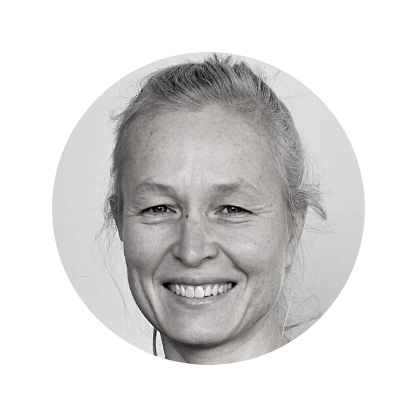
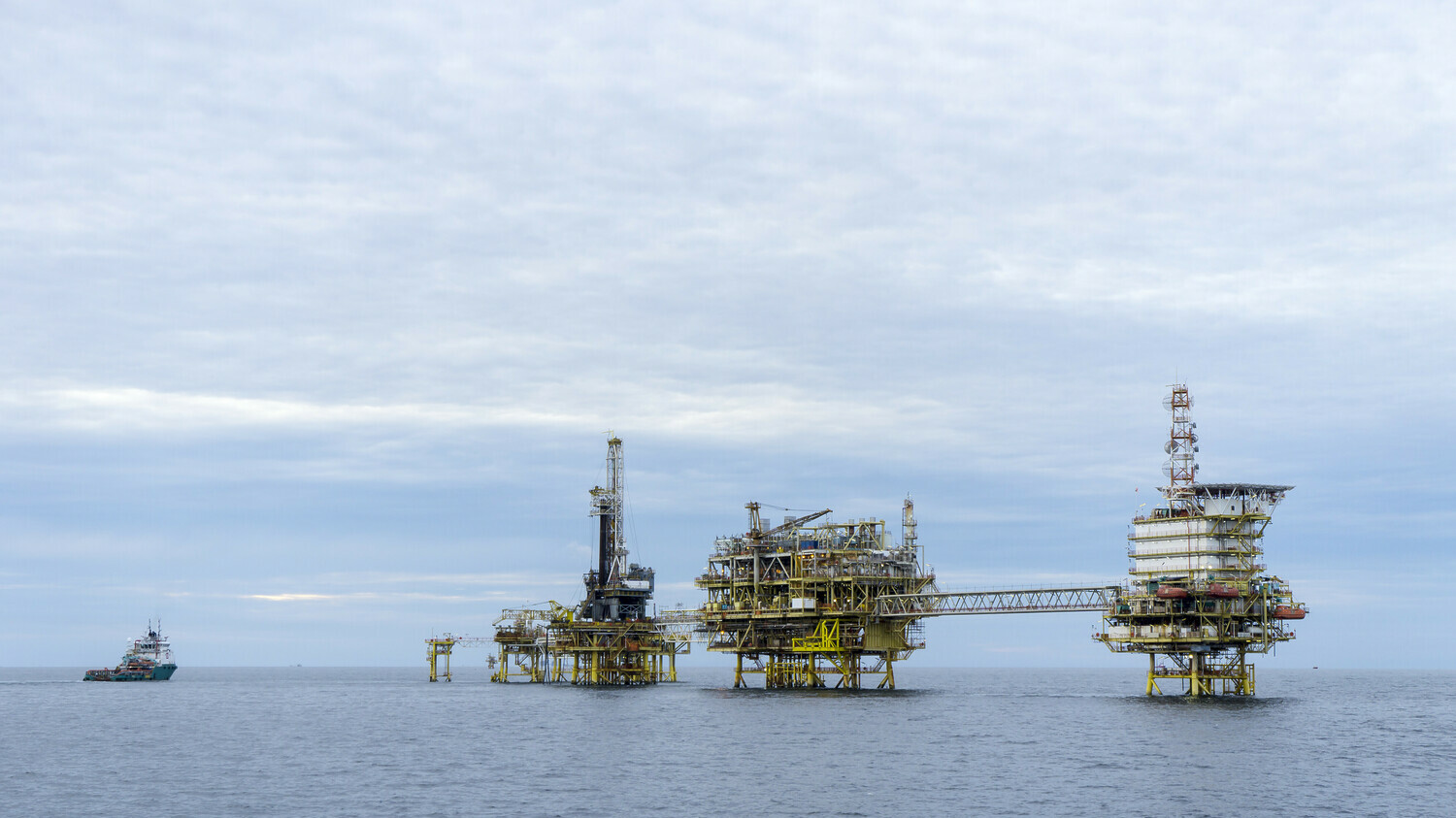
To achieve its climate goals, China develops several technologies in parallel. This includes the capture and storage of carbon dioxide (CO2). At the beginning of June, the country’s first offshore carbon storage facility was put into operation. It is located on the Enping 15-1 oil rig, about 200 kilometers off the coast of Shenzhen. The facility captures any carbon dioxide released from the rig and compresses it into a geological structure under the seabed.
The operating company China National Offshore Oil Corporation (CNOOC) intends to capture up to 1.5 million tons of CO2 in this way during the project’s lifetime. The CNOOC facilities will pump the CO2 emitted during oil production back into a salt layer three kilometers below the platform at a rate of nine tons per hour. Up to 78,000 tonnes of CO2 can be stored annually at this rate.
The purpose of such CO2 storage facilities is to capture climate-damaging gas directly at the source before it even enters the atmosphere. China aims to reduce its CO2 emissions by 2030 at the latest and achieve net zero emissions by 2060. Both of these goals combined are known as the 30/60 target. Storage is one building block towards this goal.
While the installation in the South China Sea only stores the gas, a project in Jiangsu province goes one step further. There, too, the Taizhou coal-fired power plant has been specifically capturing CO2 since June. However, its operator, China Energy, has opted for a facility that stores the greenhouse gas in special tanks rather than below the surface. The goal is to capture 500,000 tons of CO2 and resell it. Customers from the welding and food industries have reportedly already been found.
China’s largest CO2 storage facility is located in the province of Shandong. This is where the Chinese state-owned company Sinopec captures one million tons of carbon dioxide annually in one of its oil refineries. In addition, there are numerous smaller projects across the country.
In Germany, on the other hand, the development of CO2 storage makes only slow progress, which is mainly due to the current legal framework. Since 2012, the Carbon Dioxide Storage Act (KSpG) has only permitted research, testing and demonstration of CO2 storage on a limited scale. Critics see the technology as a red herring so that emissions can otherwise continue to be pumped into the atmosphere. Environmentalists also reject the technology due to its environmental risks. Other experts, in turn, believe that both radical emission reductions and CO2 capture and storage are necessary to achieve net zero.
For this reason, Germany’s Economy Minister Robert Habeck announced in December 2022 plans to introduce a new law. His ministry emphasizes that despite all efforts, “even after 2045, there will still be emissions that cannot be avoided by the technologies available so far or under development”. Consequently, the ministry said that CO2 storage must also be advanced to achieve the goal of zero emissions by that time.
The environmental association BUND (German Federation for the Environment and Nature Conservation) immediately announced its opposition to Habeck’s plans. “Instead of reducing CO2 emissions, the industry simply wants to store them under the sea,” criticized BUND head Olaf Bandt. “But the oceans are not humanity’s dumping ground or a dumping ground for climate waste.” Injecting CO2 into the sea is profitable for the gas industry. But the latter already expects leaks, which could be harmful to marine habitats, he added.
So while supporters speak of an important bridging technology, critics are also concerned that the focus on CO2 storage could delay the transition toward more sustainable solutions, such as renewable energies and energy efficiency. China has already decided on this issue.
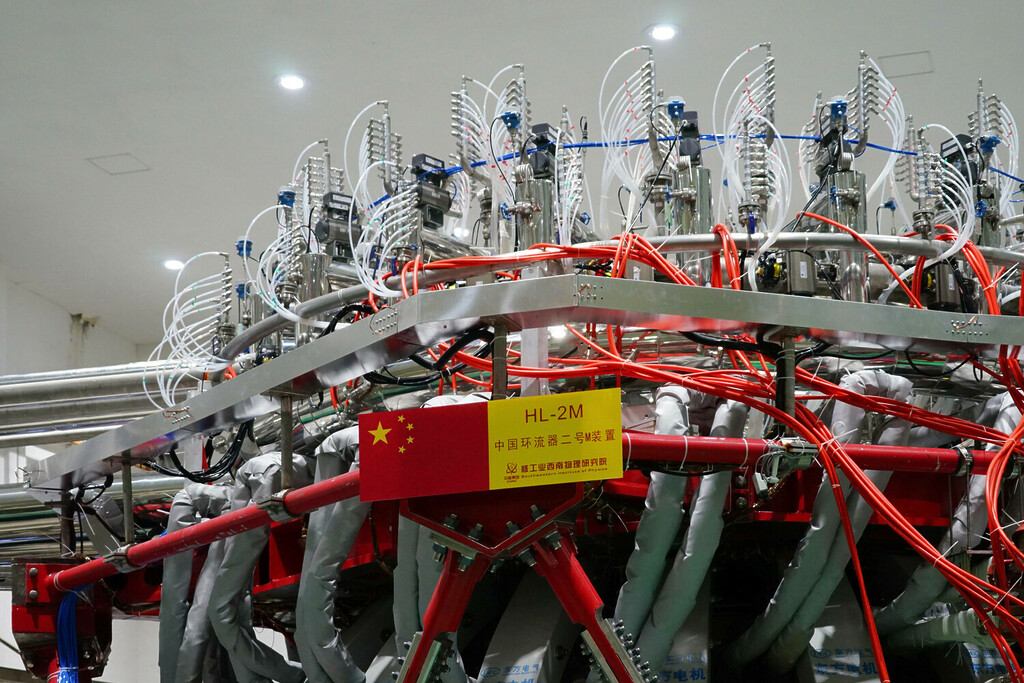
China is rapidly extending its global lead in nuclear fusion research. Researchers at the Institute of Plasma Physics of the Chinese Academy of Sciences (CAS) successfully set a new record with the Experimental Advanced Superconducting Tokamak (EAST) back in April: They managed to maintain a plasma temperature of 100 million degrees Celsius for 403 seconds.
To understand what this means, it is necessary to consider the slow pace at which fusion research progresses. In 2007, EAST maintained a plasma temperature of 50 million degrees Celsius for 101 seconds. Then in 2017, it managed to maintain that temperature for 400 seconds. Now, the Institute of Plasma Physics of the Chinese Academy of Sciences (ASIPP) in Hefei, Anhui Province, has reached twice that temperature.
Fusion energy is created when light atomic nuclei fuse. For a long time, this was only possible under conditions such as those found in the sun. Scientists and engineers have been attempting to achieve these conditions technologically for decades. The main goal of the ASIPP experiments was “improving the power generation efficiency of future fusion power plants and reducing costs,” says ASIPP Director Song Yuntao.
One of his researchers, who only wants to be referred to as Wang for security reasons and is about 30 years old, explains that “people usually only see the joy of success, but the failure behind it is always unknown.” He has already been conducting research at ASIPP for nine years. There were no previous models for the experiments, not in China or anywhere else: “I thought about giving up.”
Now the “artificial sun,” as the reactor with its superconducting magnetic coils is also called, is nearing its limits. Although an even longer discharge is possible, the next step will be constructing the precursor of a functioning fusion power plant.
The China Fusion Engineering Test Reactor (CFETR) is intended to prove the idea’s practicality for the first time. However, the CFETR is not expected to be ready for operation before 2035. After all, several technical hurdles still have to be overcome. Its maximum output is expected to be 2 gigawatts. That is considerable: China’s largest nuclear power plant generates 1.75 gigawatts.
Western research is also reporting successes. In December 2022, a US research team achieved the first nuclear fusion that generated more energy than it consumed, at least during the reaction. However, large amounts of power had to be supplied first to start the fusion process.
The experiment was conducted at the National Ignition Facility in Livermore, California. Until now, cooling the large magnetic coils and heating the plasma in particular still consumed too much energy. “This is a monumental breakthrough,” says physics professor Gilbert Collin of the University of Rochester in New York, who is not involved in the research. It is not known how far along the Chinese are on this issue.
The Germans are also making breakthroughs in some areas. For example, researchers at the Max Planck Institute for Plasma Physics (IPP) recently discovered a way to reduce the distance between the plasma and the wall of the vessel. The interaction between the reactor wall and the plasma is problematic in the conventional tokamak. The researchers have successfully reduced the distance to less than five centimeters.

This allows for better utilization of the vessel’s volume. At the site in Germany, researchers experiment with the Asdex Upgrade, which, like EAST, is a tokamak. A tokamak is a donut-shaped vessel in which a strong magnetic field confines the electrically charged particles of the plasma. “We are dealing with a significant discovery in fusion research,” says IPP Division Director Ulrich Stroth.
By contrast, the International Thermonuclear Experimental Reactor (Iter) in France, operated by 35 countries, is progressing slower. At an estimated cost of between 18 and 22 billion euros, it is the most expensive fusion project in the world and a research project involving the EU, the USA, China, India, South Korea, Japan and Russia. The Max Planck Institute for Plasma Physics is also involved. The problem with the cooperation is the slow political coordination between partner countries. “The individual components of the reactor are manufactured in the different countries, with the result that in the end, not everything fits together as planned,” says Sibylle Gunter, Director at IPP.
The Chinese do not have this problem. Between 2011 and September 2020, China led the field in nuclear fusion patents, followed by the United States, the United Kingdom and Japan, according to a study by the Japanese media company Nikkei. China’s most significant patent is considered to be the composition of the reactor’s ceramic wall. The institution with the most patents is the Southwestern Institute of Physics in Beijing, a subsidiary of the China National Nuclear Corp, followed by the Chinese Academy of Sciences (CAS).
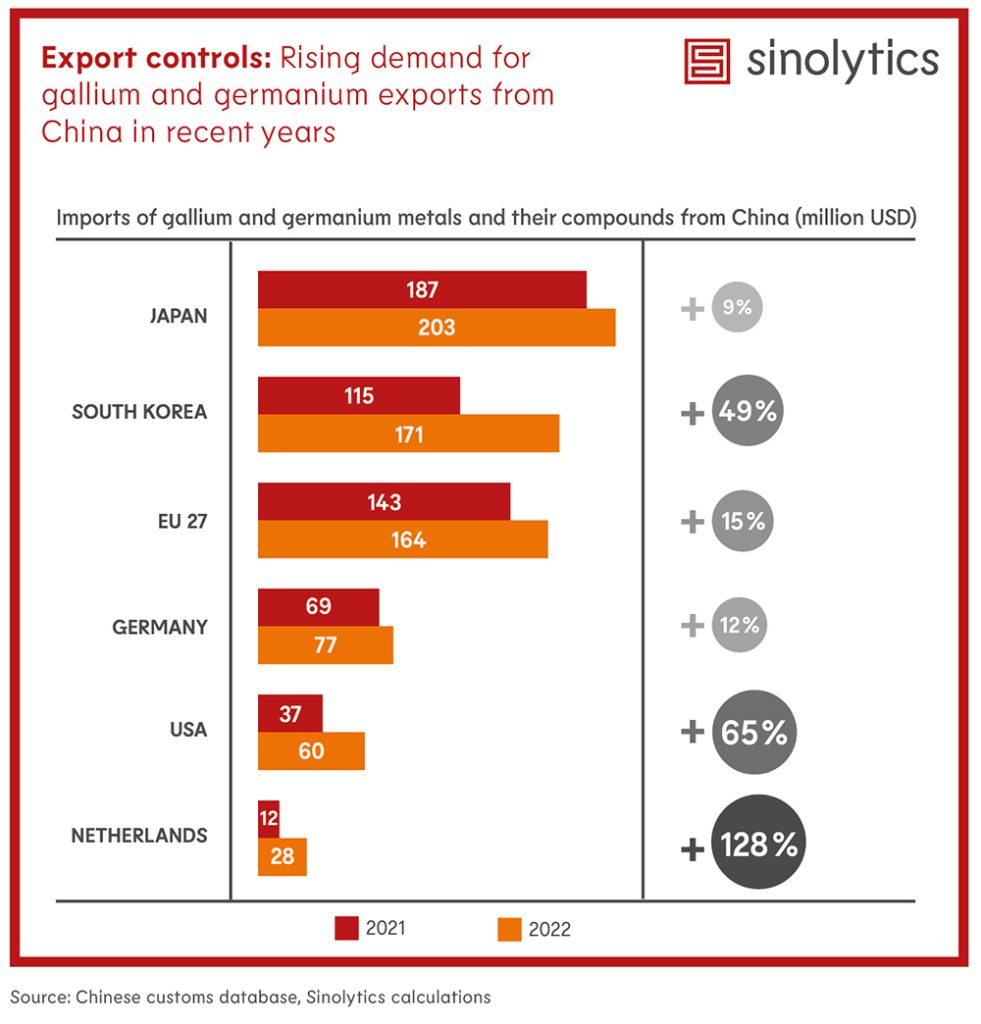
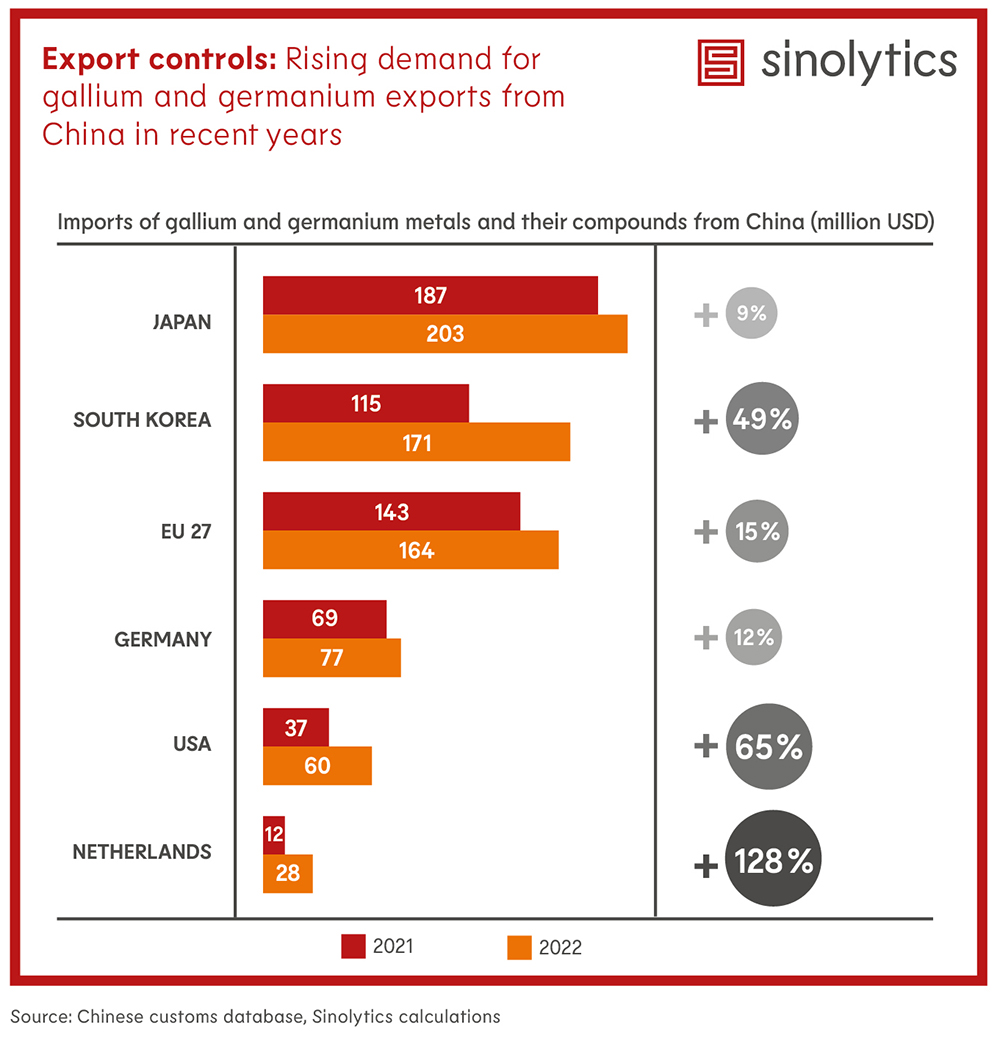
Sinolytics is a European research-based consultancy entirely focused on China. It advises European companies on their strategic orientation and concrete business activities in the People’s Republic.
Chinese Foreign Minister Qin Gang will not attend the foreign ministers’ meeting of the Association of Southeast Asian Nations (ASEAN) in Indonesia this week due to his “physical condition.” China’s top diplomat Wang Yi will represent him there, Foreign Ministry spokesman Wang Wenbin announced at a regular press conference on Tuesday. The spokesman declined to give further details of Qin’s health.
The high-level summit, which began Tuesday in Jakarta, would have seen Qin and US Secretary of State Antony Blinken meet again after their meeting in Beijing last month. Russia’s Foreign Minister Sergei Lavrov is also attending the event.
Qin has not been seen in public for the last 16 days. His absence has caused a stir in recent days. Earlier this month, the Chinese foreign minister was supposed to meet with top EU diplomat Josep Borrell, but China abruptly postponed the trip without providing details. rtr/cyb
Hong Kong threatens to impose a far-reaching ban on imports of Japanese fish. As soon as Japan starts releasing radioactive water into the Pacific Ocean, the ban will take effect, Chief Executive John Lee said Tuesday. The operator of the damaged Fukushima nuclear power plant plans to gradually release water contaminated with the radioactive hydrogen isotope tritium into the ocean in the coming years. Japanese scientists assure that the isotope is harmless in this concentration.
China has already restricted seafood imports from Japan. The new import restrictions are expected to significantly exceed this. China, and Hong Kong in particular, are important markets for the Japanese fishing industry. China has already announced a continuation of existing import restrictions. There is also public outrage in neighboring South Korea over Japan’s release plans. fin
The Taiwanese electronics company Foxconn is withdrawing from a semiconductor joint venture in India. Foxconn and the Indian mining group Vedanta have agreed to abandon the project, reports the business magazine Caixin. As recently as 2022, both partners announced an investment of 19.5 billion US dollars for the production of semiconductors and displays in the state of Gujarat.
While Foxconn did not give any reasons for its withdrawal, Vedanta stated that it had “found other partners” without providing further details. According to Caixin, the joint venture and two other new chip joint ventures had applied unsuccessfully for semiconductor production subsidies. Instead, the authorities launched a new tender for the subsidies. Why the existing projects fell through remained unclear.
India hopes to benefit from the fact that international corporations are looking for production sites outside China. New Delhi has had success with US chip manufacturer Micron. In June, the latter announced plans to invest the equivalent of 750 million euros in India to construct an assembly and test plant for semiconductors. Shortly before, Beijing banned Micron from critical networks in China over alleged security concerns. However, Micron continues to invest in the People’s Republic. ck
Russia has become China’s largest auto export market in the first five months of this year. Chinese car manufacturers exported about 287,000 vehicles to Russia between January and May, according to the China Association of Automobile Manufacturers (CAAM), citing customs data. According to Bloomberg, that is close to double the number of vehicles exported to Russia in all of last year, when China exported about 162,000.
With this huge increase, Russia overtakes the previous leader, Mexico, as a sales market. China exported around 159,000 vehicles to Mexico in the same period. The third largest market was Belgium with 120,000 cars, followed by Australia with 101,000 vehicles.
The boom can be attributed to the Western sanctions against Russia in the wake of the Ukraine war. Chinese cars are filling the gap left by the market exit of global manufacturers. In general, China’s car exports are on the upswing, partly because previous logistics problems have been resolved. Management consultancy AlixPartners expects China to become the world’s leading car exporter for the first time in 2023. In the first quarter of the year, the People’s Republic has already achieved this. China reportedly increasingly gains ground with its EVs in many sales markets. ck
Christine Lee, who the British national intelligence service MI5 suspected of being a Chinese agent, has now sued the service for it. This was reported by the South China Morning Post. In January 2022, MI5 issued a warning about Christine Lee. It claimed Lee was “involved in political interference activities in the UK” on behalf of the Chinese Communist Party. The Speaker of the House of Commons, Lindsay Hoyle, said at the time that MI5 had found that Lee had “facilitated financial donations to serving and aspiring parliamentarians on behalf of foreign nationals based in Hong Kong and China.”
Lee denies the accusations and has now sued the national intelligence service in a London court for violating her human rights, seeking damages of an undisclosed amount. According to her lawyer, the so-called “interference alert” issued by MI5 was the first such warning in “at least 80 years”. Lee claims to have been unaware of the warning until she learned from media reports that she had been branded an “enemy of the state.” cyb
Security authorities have questioned and pressured the family of Hong Kong democracy activist Nathan Law. According to local media, officers also raided the homes of Law’s parents and older brother in the city’s Tung Chung district around six in the morning.
Law now lives in London and is one of eight activists on whom Hong Kong placed a bounty of one million Hong Kong dollars (about 120,000 euros) last week. The ex-parliamentarians, lawyers, journalists, ex-student leaders and trade unionists are accused of violating the National Security Law (NSL), passed three years ago under pressure from Beijing.
According to Sing Tao Daily, Law’s relatives were released later the same day. The questioning of Law’s family is an indication that the bounties are not an empty threat. “[We] will pursue them for the rest of our lives even if they run to the ends of the Earth,” government Chief Executive John Lee said about the activists. Exiled dissidents in mainland China are also intimidated by pressure exerted on families who have stayed behind. ck
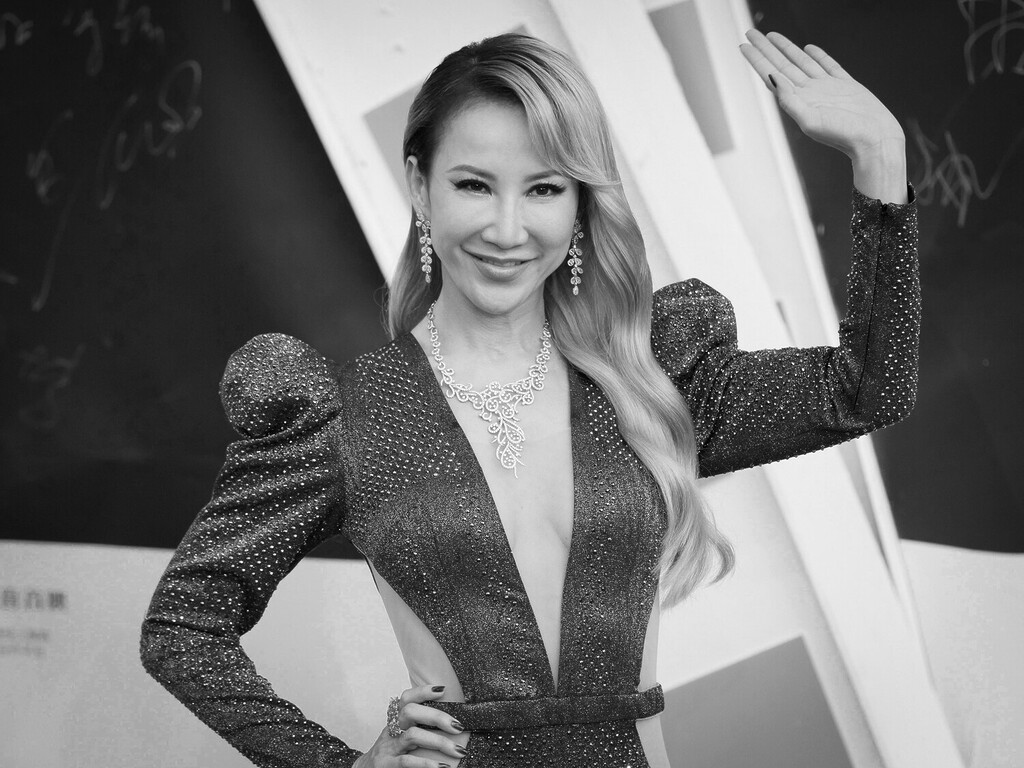
With countless obituaries and messages of grief, Asia says goodbye to Coco Lee, one of the region’s most famous singers. She passed away in early July at the age of 48. On Instagram, her sister Nancy reminisces about how Lee “worked tirelessly” to bring Chinese stars international attention and “went all out to shine for the Chinese.” Lee’s fellow actor and singer Jackie Chan posted a photo of himself and Lee on his Weibo page, writing, “Your voice, dancing and sunny smile have left a mark on many. You brought so much to this world. There is now one more star in the sky.” Oscar winner Michelle Yeoh also said her goodbyes to Lee with the words, “We have lost a bright star.”
Lee was born in Hong Kong on January 17, 1975, but spent her childhood and youth in the United States. Her life in the spotlight began after she won a singing competition during a summer stay in Hong Kong in 1992. Her debut album “Coco Lee” was released in 1996 and became the best-selling album of the year in Asia. At the time, Lee was just 19 years old.
Lee sang her songs in Mandarin, Cantonese and English. She was also active as an actress, lending her voice among others to Mulan, the character in the eponymous Disney movie. Lee rose to fame in the West primarily with “A Love Before Time,” the theme song from the film “Tiger and Dragon,” which also earned her an Oscar nomination. At the 2001 awards, she sang the piece in a red silk dress, accompanied by a choreography of kung fu fighters. It was the first appearance of a Chinese singer at the Academy Awards and a legendary moment that many people in the Chinese diaspora remember to this day.
Until her death, Lee had released 18 albums. She celebrated her greatest successes in China, her birthplace Hong Kong, Taiwan, Singapore, and among the many Chinese abroad, who identified with the multilingual singer. In addition to her life as a pop star, Lee was also active as an ambassador for several charitable organizations such as Unicef. In China, she was most recently a popular guest as a jury member in casting shows.
Her early death sparked sadness and nostalgia on China’s social media. For many Chinese, songs like “宝贝对不起” (Baby, I’m sorry) represent better, more carefree times. Lee was torn on the inside behind the glowing image of an internationally successful singer, however. For many years she suffered from depression, in 2022 she had to undergo several operations on her leg and pelvis and was just recovering from breast cancer. Just last December, Lee posted an optimistic New Year’s greeting on Instagram. It had been a challenging year for her, she wrote, but “just like The Great Wall of China I will never fall.” She urged her fans to never give up hope: “You are not alone, no matter how hard life gets, I’m with u.”
Her sister Nancy writes in her personal obituary that Lee’s depression had become worse in the end. Despite receiving professional help, “that demon inside of her took the better of her.” In early July, Lee was admitted to Hong Kong’s Queen Mary Hospital after a suicide attempt. She spent three days in a coma, from which she never woke up. Fabian Peltsch
Hannah Ha has been appointed Asia chair at US law firm Mayer Brown in June. Ha has been with the firm for more than 17 years and has been a partner in the corporate and securities practice since 2006. Ha succeeds Duncan Abate.
Arwed Schwarz has been Chief Financial Officer of BMW Group Region China for BMW China in Beijing since July. Previously, he held the position of Vice President Finance, Controlling & Risk Management at BMW Brilliance Automotive, also in Beijing, since fall 2020.
Is something changing in your organization? Let us know at heads@table.media!
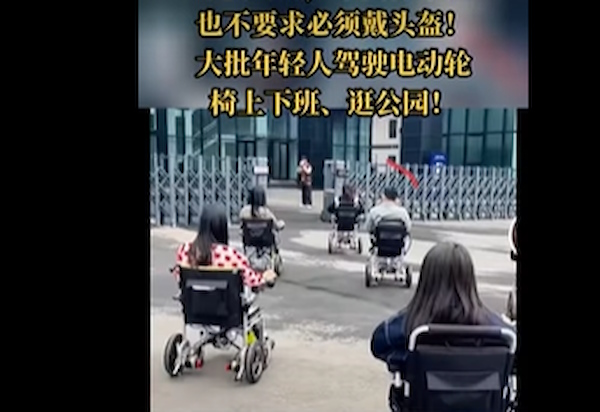
To circumvent new regulations on e-bikes, young people in the southern Chinese city of Guangzhou have turned to an unusual mode of transportation: electric wheelchairs. Contributing to the recent trend is the fact that e-bikes are banned in many areas and motorists are often stuck in traffic jams, writes the Singapore newspaper Straits Times. In addition, this flexible vehicle saves effort and there is no need to look for a parking space for e-scooters, a practically minded young person is anonymously quoted as saying. Speed limits have recently been imposed for e-bikes. They are only allowed to be pushed over crosswalks. According to media reports, sales of electric wheelchairs increased by 60 percent in the first half of the year.
In today’s issue, we look at two things that are controversial in Germany but on which China works hard: carbon capture and storage and nuclear fusion.
The state-owned oil company CNOOC recently launched the country’s first offshore CO2 storage facility in the sea south of Shenzhen. The facility, which is connected to an oil rig, captures the CO2 it releases and compresses it into a layer of salt under the seabed. The technology, also known as Carbon Capture and Storage (CCS), is one of China’s most important elements on the road to achieving net zero, as Joern Petring analyzes. Similar plants are already being constructed all over the country.
Nuclear fusion also belongs to promising technologies for Beijing. After initial successes with a test reactor, it now wants to build the first stage of a real fusion power plant as quickly as possible, reports Frank Sieren. China also collects more fusion patents than any other country. The multinational fusion reactor Iter in France, on the other hand, is making only slow progress. Nor will there be much political resistance to the technology in China.


To achieve its climate goals, China develops several technologies in parallel. This includes the capture and storage of carbon dioxide (CO2). At the beginning of June, the country’s first offshore carbon storage facility was put into operation. It is located on the Enping 15-1 oil rig, about 200 kilometers off the coast of Shenzhen. The facility captures any carbon dioxide released from the rig and compresses it into a geological structure under the seabed.
The operating company China National Offshore Oil Corporation (CNOOC) intends to capture up to 1.5 million tons of CO2 in this way during the project’s lifetime. The CNOOC facilities will pump the CO2 emitted during oil production back into a salt layer three kilometers below the platform at a rate of nine tons per hour. Up to 78,000 tonnes of CO2 can be stored annually at this rate.
The purpose of such CO2 storage facilities is to capture climate-damaging gas directly at the source before it even enters the atmosphere. China aims to reduce its CO2 emissions by 2030 at the latest and achieve net zero emissions by 2060. Both of these goals combined are known as the 30/60 target. Storage is one building block towards this goal.
While the installation in the South China Sea only stores the gas, a project in Jiangsu province goes one step further. There, too, the Taizhou coal-fired power plant has been specifically capturing CO2 since June. However, its operator, China Energy, has opted for a facility that stores the greenhouse gas in special tanks rather than below the surface. The goal is to capture 500,000 tons of CO2 and resell it. Customers from the welding and food industries have reportedly already been found.
China’s largest CO2 storage facility is located in the province of Shandong. This is where the Chinese state-owned company Sinopec captures one million tons of carbon dioxide annually in one of its oil refineries. In addition, there are numerous smaller projects across the country.
In Germany, on the other hand, the development of CO2 storage makes only slow progress, which is mainly due to the current legal framework. Since 2012, the Carbon Dioxide Storage Act (KSpG) has only permitted research, testing and demonstration of CO2 storage on a limited scale. Critics see the technology as a red herring so that emissions can otherwise continue to be pumped into the atmosphere. Environmentalists also reject the technology due to its environmental risks. Other experts, in turn, believe that both radical emission reductions and CO2 capture and storage are necessary to achieve net zero.
For this reason, Germany’s Economy Minister Robert Habeck announced in December 2022 plans to introduce a new law. His ministry emphasizes that despite all efforts, “even after 2045, there will still be emissions that cannot be avoided by the technologies available so far or under development”. Consequently, the ministry said that CO2 storage must also be advanced to achieve the goal of zero emissions by that time.
The environmental association BUND (German Federation for the Environment and Nature Conservation) immediately announced its opposition to Habeck’s plans. “Instead of reducing CO2 emissions, the industry simply wants to store them under the sea,” criticized BUND head Olaf Bandt. “But the oceans are not humanity’s dumping ground or a dumping ground for climate waste.” Injecting CO2 into the sea is profitable for the gas industry. But the latter already expects leaks, which could be harmful to marine habitats, he added.
So while supporters speak of an important bridging technology, critics are also concerned that the focus on CO2 storage could delay the transition toward more sustainable solutions, such as renewable energies and energy efficiency. China has already decided on this issue.

China is rapidly extending its global lead in nuclear fusion research. Researchers at the Institute of Plasma Physics of the Chinese Academy of Sciences (CAS) successfully set a new record with the Experimental Advanced Superconducting Tokamak (EAST) back in April: They managed to maintain a plasma temperature of 100 million degrees Celsius for 403 seconds.
To understand what this means, it is necessary to consider the slow pace at which fusion research progresses. In 2007, EAST maintained a plasma temperature of 50 million degrees Celsius for 101 seconds. Then in 2017, it managed to maintain that temperature for 400 seconds. Now, the Institute of Plasma Physics of the Chinese Academy of Sciences (ASIPP) in Hefei, Anhui Province, has reached twice that temperature.
Fusion energy is created when light atomic nuclei fuse. For a long time, this was only possible under conditions such as those found in the sun. Scientists and engineers have been attempting to achieve these conditions technologically for decades. The main goal of the ASIPP experiments was “improving the power generation efficiency of future fusion power plants and reducing costs,” says ASIPP Director Song Yuntao.
One of his researchers, who only wants to be referred to as Wang for security reasons and is about 30 years old, explains that “people usually only see the joy of success, but the failure behind it is always unknown.” He has already been conducting research at ASIPP for nine years. There were no previous models for the experiments, not in China or anywhere else: “I thought about giving up.”
Now the “artificial sun,” as the reactor with its superconducting magnetic coils is also called, is nearing its limits. Although an even longer discharge is possible, the next step will be constructing the precursor of a functioning fusion power plant.
The China Fusion Engineering Test Reactor (CFETR) is intended to prove the idea’s practicality for the first time. However, the CFETR is not expected to be ready for operation before 2035. After all, several technical hurdles still have to be overcome. Its maximum output is expected to be 2 gigawatts. That is considerable: China’s largest nuclear power plant generates 1.75 gigawatts.
Western research is also reporting successes. In December 2022, a US research team achieved the first nuclear fusion that generated more energy than it consumed, at least during the reaction. However, large amounts of power had to be supplied first to start the fusion process.
The experiment was conducted at the National Ignition Facility in Livermore, California. Until now, cooling the large magnetic coils and heating the plasma in particular still consumed too much energy. “This is a monumental breakthrough,” says physics professor Gilbert Collin of the University of Rochester in New York, who is not involved in the research. It is not known how far along the Chinese are on this issue.
The Germans are also making breakthroughs in some areas. For example, researchers at the Max Planck Institute for Plasma Physics (IPP) recently discovered a way to reduce the distance between the plasma and the wall of the vessel. The interaction between the reactor wall and the plasma is problematic in the conventional tokamak. The researchers have successfully reduced the distance to less than five centimeters.

This allows for better utilization of the vessel’s volume. At the site in Germany, researchers experiment with the Asdex Upgrade, which, like EAST, is a tokamak. A tokamak is a donut-shaped vessel in which a strong magnetic field confines the electrically charged particles of the plasma. “We are dealing with a significant discovery in fusion research,” says IPP Division Director Ulrich Stroth.
By contrast, the International Thermonuclear Experimental Reactor (Iter) in France, operated by 35 countries, is progressing slower. At an estimated cost of between 18 and 22 billion euros, it is the most expensive fusion project in the world and a research project involving the EU, the USA, China, India, South Korea, Japan and Russia. The Max Planck Institute for Plasma Physics is also involved. The problem with the cooperation is the slow political coordination between partner countries. “The individual components of the reactor are manufactured in the different countries, with the result that in the end, not everything fits together as planned,” says Sibylle Gunter, Director at IPP.
The Chinese do not have this problem. Between 2011 and September 2020, China led the field in nuclear fusion patents, followed by the United States, the United Kingdom and Japan, according to a study by the Japanese media company Nikkei. China’s most significant patent is considered to be the composition of the reactor’s ceramic wall. The institution with the most patents is the Southwestern Institute of Physics in Beijing, a subsidiary of the China National Nuclear Corp, followed by the Chinese Academy of Sciences (CAS).


Sinolytics is a European research-based consultancy entirely focused on China. It advises European companies on their strategic orientation and concrete business activities in the People’s Republic.
Chinese Foreign Minister Qin Gang will not attend the foreign ministers’ meeting of the Association of Southeast Asian Nations (ASEAN) in Indonesia this week due to his “physical condition.” China’s top diplomat Wang Yi will represent him there, Foreign Ministry spokesman Wang Wenbin announced at a regular press conference on Tuesday. The spokesman declined to give further details of Qin’s health.
The high-level summit, which began Tuesday in Jakarta, would have seen Qin and US Secretary of State Antony Blinken meet again after their meeting in Beijing last month. Russia’s Foreign Minister Sergei Lavrov is also attending the event.
Qin has not been seen in public for the last 16 days. His absence has caused a stir in recent days. Earlier this month, the Chinese foreign minister was supposed to meet with top EU diplomat Josep Borrell, but China abruptly postponed the trip without providing details. rtr/cyb
Hong Kong threatens to impose a far-reaching ban on imports of Japanese fish. As soon as Japan starts releasing radioactive water into the Pacific Ocean, the ban will take effect, Chief Executive John Lee said Tuesday. The operator of the damaged Fukushima nuclear power plant plans to gradually release water contaminated with the radioactive hydrogen isotope tritium into the ocean in the coming years. Japanese scientists assure that the isotope is harmless in this concentration.
China has already restricted seafood imports from Japan. The new import restrictions are expected to significantly exceed this. China, and Hong Kong in particular, are important markets for the Japanese fishing industry. China has already announced a continuation of existing import restrictions. There is also public outrage in neighboring South Korea over Japan’s release plans. fin
The Taiwanese electronics company Foxconn is withdrawing from a semiconductor joint venture in India. Foxconn and the Indian mining group Vedanta have agreed to abandon the project, reports the business magazine Caixin. As recently as 2022, both partners announced an investment of 19.5 billion US dollars for the production of semiconductors and displays in the state of Gujarat.
While Foxconn did not give any reasons for its withdrawal, Vedanta stated that it had “found other partners” without providing further details. According to Caixin, the joint venture and two other new chip joint ventures had applied unsuccessfully for semiconductor production subsidies. Instead, the authorities launched a new tender for the subsidies. Why the existing projects fell through remained unclear.
India hopes to benefit from the fact that international corporations are looking for production sites outside China. New Delhi has had success with US chip manufacturer Micron. In June, the latter announced plans to invest the equivalent of 750 million euros in India to construct an assembly and test plant for semiconductors. Shortly before, Beijing banned Micron from critical networks in China over alleged security concerns. However, Micron continues to invest in the People’s Republic. ck
Russia has become China’s largest auto export market in the first five months of this year. Chinese car manufacturers exported about 287,000 vehicles to Russia between January and May, according to the China Association of Automobile Manufacturers (CAAM), citing customs data. According to Bloomberg, that is close to double the number of vehicles exported to Russia in all of last year, when China exported about 162,000.
With this huge increase, Russia overtakes the previous leader, Mexico, as a sales market. China exported around 159,000 vehicles to Mexico in the same period. The third largest market was Belgium with 120,000 cars, followed by Australia with 101,000 vehicles.
The boom can be attributed to the Western sanctions against Russia in the wake of the Ukraine war. Chinese cars are filling the gap left by the market exit of global manufacturers. In general, China’s car exports are on the upswing, partly because previous logistics problems have been resolved. Management consultancy AlixPartners expects China to become the world’s leading car exporter for the first time in 2023. In the first quarter of the year, the People’s Republic has already achieved this. China reportedly increasingly gains ground with its EVs in many sales markets. ck
Christine Lee, who the British national intelligence service MI5 suspected of being a Chinese agent, has now sued the service for it. This was reported by the South China Morning Post. In January 2022, MI5 issued a warning about Christine Lee. It claimed Lee was “involved in political interference activities in the UK” on behalf of the Chinese Communist Party. The Speaker of the House of Commons, Lindsay Hoyle, said at the time that MI5 had found that Lee had “facilitated financial donations to serving and aspiring parliamentarians on behalf of foreign nationals based in Hong Kong and China.”
Lee denies the accusations and has now sued the national intelligence service in a London court for violating her human rights, seeking damages of an undisclosed amount. According to her lawyer, the so-called “interference alert” issued by MI5 was the first such warning in “at least 80 years”. Lee claims to have been unaware of the warning until she learned from media reports that she had been branded an “enemy of the state.” cyb
Security authorities have questioned and pressured the family of Hong Kong democracy activist Nathan Law. According to local media, officers also raided the homes of Law’s parents and older brother in the city’s Tung Chung district around six in the morning.
Law now lives in London and is one of eight activists on whom Hong Kong placed a bounty of one million Hong Kong dollars (about 120,000 euros) last week. The ex-parliamentarians, lawyers, journalists, ex-student leaders and trade unionists are accused of violating the National Security Law (NSL), passed three years ago under pressure from Beijing.
According to Sing Tao Daily, Law’s relatives were released later the same day. The questioning of Law’s family is an indication that the bounties are not an empty threat. “[We] will pursue them for the rest of our lives even if they run to the ends of the Earth,” government Chief Executive John Lee said about the activists. Exiled dissidents in mainland China are also intimidated by pressure exerted on families who have stayed behind. ck

With countless obituaries and messages of grief, Asia says goodbye to Coco Lee, one of the region’s most famous singers. She passed away in early July at the age of 48. On Instagram, her sister Nancy reminisces about how Lee “worked tirelessly” to bring Chinese stars international attention and “went all out to shine for the Chinese.” Lee’s fellow actor and singer Jackie Chan posted a photo of himself and Lee on his Weibo page, writing, “Your voice, dancing and sunny smile have left a mark on many. You brought so much to this world. There is now one more star in the sky.” Oscar winner Michelle Yeoh also said her goodbyes to Lee with the words, “We have lost a bright star.”
Lee was born in Hong Kong on January 17, 1975, but spent her childhood and youth in the United States. Her life in the spotlight began after she won a singing competition during a summer stay in Hong Kong in 1992. Her debut album “Coco Lee” was released in 1996 and became the best-selling album of the year in Asia. At the time, Lee was just 19 years old.
Lee sang her songs in Mandarin, Cantonese and English. She was also active as an actress, lending her voice among others to Mulan, the character in the eponymous Disney movie. Lee rose to fame in the West primarily with “A Love Before Time,” the theme song from the film “Tiger and Dragon,” which also earned her an Oscar nomination. At the 2001 awards, she sang the piece in a red silk dress, accompanied by a choreography of kung fu fighters. It was the first appearance of a Chinese singer at the Academy Awards and a legendary moment that many people in the Chinese diaspora remember to this day.
Until her death, Lee had released 18 albums. She celebrated her greatest successes in China, her birthplace Hong Kong, Taiwan, Singapore, and among the many Chinese abroad, who identified with the multilingual singer. In addition to her life as a pop star, Lee was also active as an ambassador for several charitable organizations such as Unicef. In China, she was most recently a popular guest as a jury member in casting shows.
Her early death sparked sadness and nostalgia on China’s social media. For many Chinese, songs like “宝贝对不起” (Baby, I’m sorry) represent better, more carefree times. Lee was torn on the inside behind the glowing image of an internationally successful singer, however. For many years she suffered from depression, in 2022 she had to undergo several operations on her leg and pelvis and was just recovering from breast cancer. Just last December, Lee posted an optimistic New Year’s greeting on Instagram. It had been a challenging year for her, she wrote, but “just like The Great Wall of China I will never fall.” She urged her fans to never give up hope: “You are not alone, no matter how hard life gets, I’m with u.”
Her sister Nancy writes in her personal obituary that Lee’s depression had become worse in the end. Despite receiving professional help, “that demon inside of her took the better of her.” In early July, Lee was admitted to Hong Kong’s Queen Mary Hospital after a suicide attempt. She spent three days in a coma, from which she never woke up. Fabian Peltsch
Hannah Ha has been appointed Asia chair at US law firm Mayer Brown in June. Ha has been with the firm for more than 17 years and has been a partner in the corporate and securities practice since 2006. Ha succeeds Duncan Abate.
Arwed Schwarz has been Chief Financial Officer of BMW Group Region China for BMW China in Beijing since July. Previously, he held the position of Vice President Finance, Controlling & Risk Management at BMW Brilliance Automotive, also in Beijing, since fall 2020.
Is something changing in your organization? Let us know at heads@table.media!

To circumvent new regulations on e-bikes, young people in the southern Chinese city of Guangzhou have turned to an unusual mode of transportation: electric wheelchairs. Contributing to the recent trend is the fact that e-bikes are banned in many areas and motorists are often stuck in traffic jams, writes the Singapore newspaper Straits Times. In addition, this flexible vehicle saves effort and there is no need to look for a parking space for e-scooters, a practically minded young person is anonymously quoted as saying. Speed limits have recently been imposed for e-bikes. They are only allowed to be pushed over crosswalks. According to media reports, sales of electric wheelchairs increased by 60 percent in the first half of the year.
